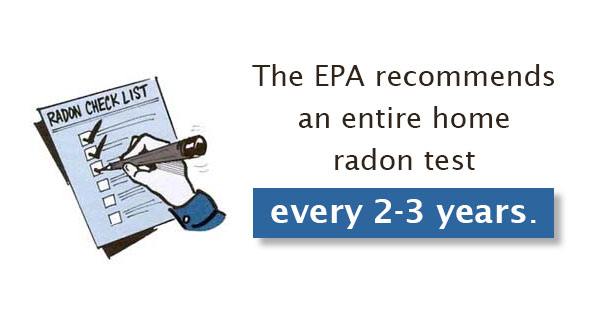
January is Radon Awareness Month in the state of Colorado, and considering that 1 in 15 U.S. homes is estimated to have toxic radon levels at or above the EPA standard level, it is essential to make sure your home is safe. Dangerous levels of radon can lead to lung cancers, and this invisible gas could be affecting you, your family, and your pets’ health every time you draw breath.
In honor of Colorado Radon Awareness Month, here is everything you need to know about residential radon testing, radon mitigation services, and this month as a whole.
What exactly is radon testing month?
January 2017 is the month designated for a health campaign to educate Coloradans about the potential dangers of extended radon exposure.
What is radon, and why do I need to test my home?
Radon is a colorless, tasteless, and odorless radioactive gas that naturally forms in the soil around your home as uranium in the soil and surrounding rocks break down. It can seep through the home via small cracks and crevices or through a dirt floor in a basement or crawlspace.
Wait, do you mean that kind of uranium?
Unfortunately, yes. Uranium isotopes are used as a fuel source in nuclear energy plants and fissile material in some nuclear weapons. However, this radioactive element also occurs in the natural world all around us.
What health risks come with radon?
After smoking cigarettes, exposure to radon is the second leading cause of lung cancer nationwide. It can also lead to respiratory and lung infections.
Why Colorado?
Because Colorado has a uniquely dense geological makeup, all 64 counties throughout the state are susceptible to radon. This is why radon abatement and testing is even more important, as the entire population is at a high risk for exposure. In fact, the entire state ranks seventh nationwide for average home radon levels.
Some important statistics
Here are some important things to know about radon testing in your home:
- Radon levels are measured in picocuries per liter, pCi/L, and the EPA defines any home with a level of 4 pCi/L or higher unsafe.
- An average home in Colorado has a pCi/L level of 6.7, and half of all homes have a level over 4 pCi/L.
- The EPA recommends an entire home radon test every two to three years.
How can I go about removing radon from my home?
The answer to this is dependent on both the layout and the amount of radon in your home. If you have less than 4 pCi/L, then you can hire a professional company to come by and do a quick and easy radon abatement. However, if it is too high, then you may need to install a complete mitigation system which can range anywhere between $800 to $2,000.
If you have any more questions about radon, make sure to contact our professionals today.

Recent Comments